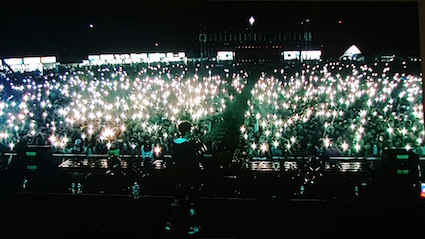The “annual” hip-hop season that came with the return of Mnet’s hit TV show Show Me the Money has reached its peak with the finale of the show, and as always, a different set of rappers is receiving the spotlight compared to last year. The trend for “popular hip-hop” in Korea, which has continued for half a decade now, has not only made hip-hop more accessible, but also enjoyable to the general audience. Consequently, the soaring popularity of hip-hop — no more a minority genre in Korea — has influenced every corner of Korean popular culture, from fashion to music to language. The audience for hip-hop has widened too, and the fans have become more loyal as well.
Many companies have taken advantage of this cultural phenomenon in their marketing strategy. A prominent example of this was the GS25 Beer Festival, held on September 9, which had conveniently absorbed the cream of the crop from this season of Show Me the Money into its line-up of rappers. The festival had three main channels that gave out invitations at almost no cost. The first two channels were through event pages set up on the GS25 convenience store app. For a chance to win two of the total 20,000 tickets at stake, one would have to either spend more than 2500 KRW with a BC card, or buy a can of beer from a participating brand at any GS25 convenience store within the event period. One would be eligible for multiple entries, and with more entries, the higher the chances would be of winning. These low criteria, which consequently lowered the entry barrier, motivated people to spend more to secure their chances. The last channel through which the tickets could be obtained was the social commerce site Ticketmonster, where 5000 tickets were released for 2500 KRW each. Again, the tickets were not at all expensive; they just served to create a buzz about the event. These tickets were sold out within an hour and a half.
With innumerable invitations sent out and the sheer scale of the event promoted, the festival venue bustled with a crowd that arrived early to enjoy the perfect Saturday weather with good music, food, and drinks. People came in endlessly until the very end of the festival, and since re-entry was not permitted, not many left the venue early. In the spacious performing arena, the audience either stood around the stage for a closer look at their favorite hip-hop artists or sat way behind, simply satisfied with the chance to catch the live performances through large concert screens. The only payment methods accepted within the festival grounds were cash, POP card, and BC card; there were top-up booths located every few meters within the venue. Many food and beverage (F&B) brands, including GS25’s own brand, sold their ready-made snacks and meals, and 25 beer and beverage companies sold drinks along the edge of the stadium with bright screens showcasing their commercial films in endless loops.
This promotion strategy, which made customers pay with a specific method and buy specific products at a specific place, could have otherwise been too blatant and invasive if not for the festival’s strong line-up of rappers. The organizers had stayed sensitive to the latest trends of the scene and preferences of the audience to create an event that people want to be at, inducing voluntary participation from their customers. For example, the headliners of the festival were producers on Show Me the Money 6 Dynamic Duo, Dok2, and The Quiett. Also, rappers such as Nucksal, Killagramz, Ja Mezz, Punchnello, Asol, and Hash Swan, who gained attention this season, were invited for the warm-up shows earlier during the festival. The festival is also a win-win as GS25 gets to create a positive brand image by providing trendy cultural experiences for its customers, while the F&B and beer brands, and especially the card companies that sponsored the event, benefit from the huge gathering of potential customers.
It is evident that the younger generation, working or non-working alike, is increasingly showing a high willingness to pay to quench its thirst for cultural and emotional satisfaction. More people are opening their wallets and are motivated to participate in occasions that offer high value to them. This also creates opportunities for companies to carry out bolder promotional activities that require spontaneous action from the customers. This has shifted the paradigm of traditional marketing towards lifestyle branding that seeks to incorporate products into customers’ lives naturally, persuading them to actively use their products or services again. Creative ideas that persuade the younger generation to spend more have constantly evolved over the years. This outburst of unprecedented marketing attempts is not bound to reach a limit anytime soon.


